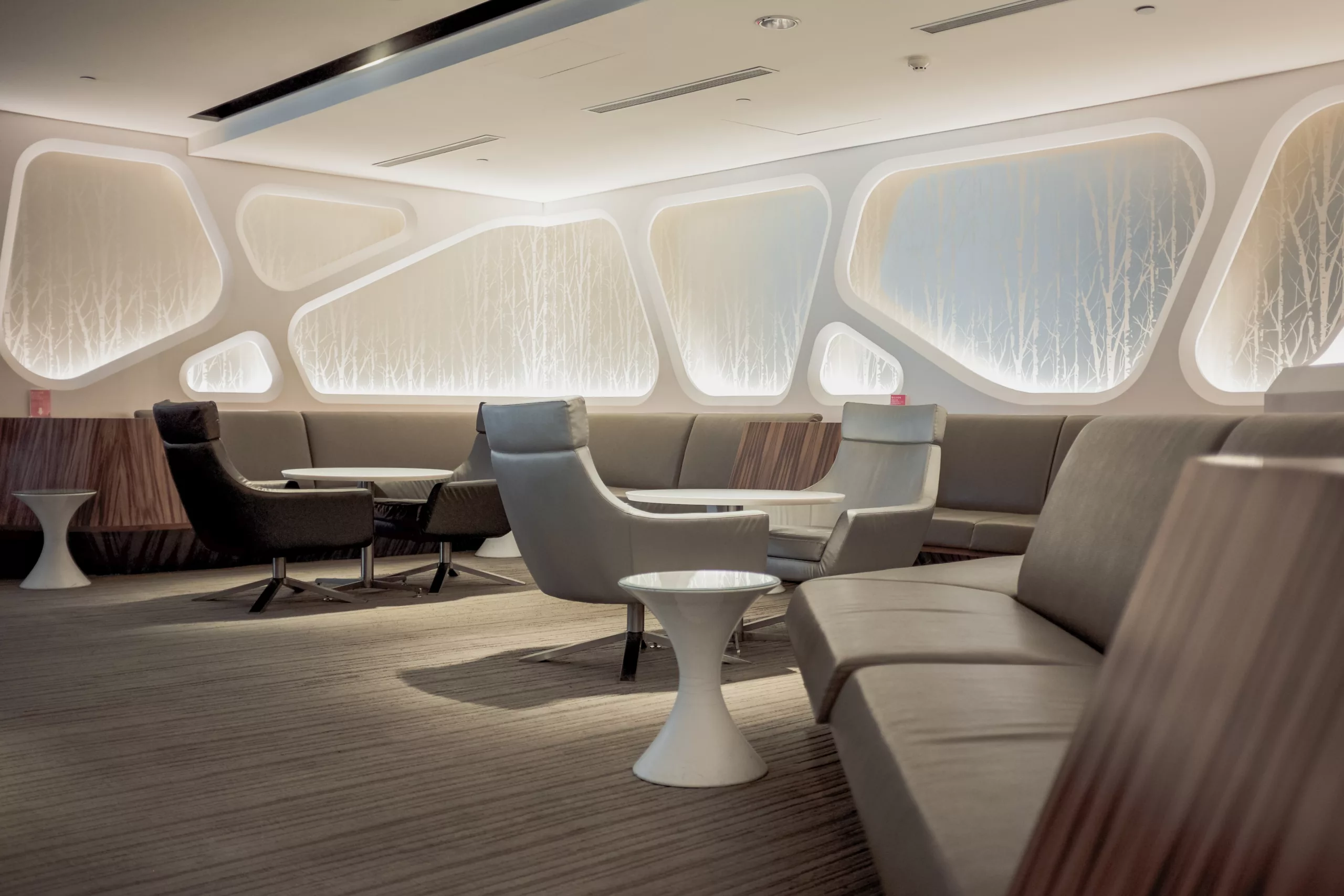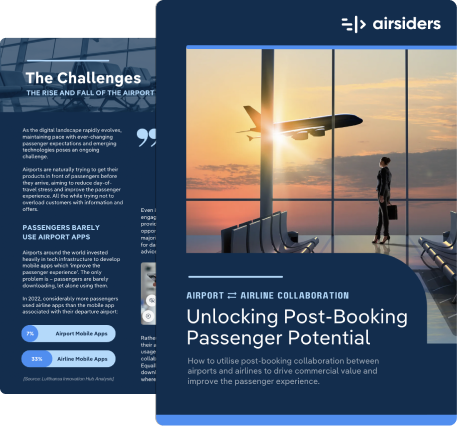Future of airport management: imagining the innovative airports of 2030
For the past few years, the air transport industry has been left reeling from the economic, societal and structural effects of the Covid-19 pandemic. Now, airport managers are thinking beyond the pandemic to a brighter future – one where innovative technologies will take the industry to a new level.
A fully-fledged, future-proof recovery is on the horizon. But how exactly will airports go from doom to boom, maximising their potential to deliver a sustainable, efficient airport of the future? In this article, we look at six main trends that will mark the future of airport management.
Future of airport management: 6 main trends
Health and wellness will restore confidence
Restoring passenger confidence post-Covid will be pivotal. In order for the aviation industry to recover and move forward, travellers will need to feel safe. And, while the easing of the effects of the pandemic will be the main driver of this renewed confidence, there are a whole host of innovative technologies airports can implement.
It all starts with a breath of fresh air. IoT systems can have a profound effect on indoor air quality, with smart sensors that can measure and adapt ventilation and filtration based on occupancy levels. This will be key for airports in the long run, as will state-of-the-art analytics software. This kind of technology could also be used for more efficient cleaning and reporting within the airports, with integrated janitorial software enabling staff to report sanitation of common areas and facilities in real time.
In the future, touchless technology will be the standard for every airport in the world. While the likes of paperless boarding passes are already well-established, soon every step of the airport journey will be touchless – from the kind of biometric facial recognition technology that’s already used at the likes of Gatwick Airport to touchless payments at every concession stand. An entirely touchless airport experience, from check-in to boarding gate, would have a huge impact on airport hygiene and, ultimately, traveller health.
Speaking of health, an often underlooked area is fatigue and quality of rest. Instead of sleeping on the issue, many airports are thinking ahead and, with the help of innovative Finnish napsters GoSleep, sleep/nap pods in airports are now a reality, with Helsinki, Heathrow, Dubai and Munich already helping their passengers catch some much-needed rest. By 2030, sleep pods will be a common sight in airports all over the world.
Innovative new platforms will rise to the fore
The key behind the digitalisation of airports will be customer experience, as airports implement cutting-edge ‘as-a-service’ platforms to better understand and meet the needs and expectations of their passengers. With more access to real-time data, airports can have greater control over their services, products and revenue streams, providing customers with a personalised, seamless travel experience, while building a flexible infrastructure that connects everyone in the travel chain.
Virtual interlining platforms, such as the one developed by Airsiders, also make it possible to generate new revenue streams. An increase in connections and flight routes brings extra landing revenue, along with a rise in passenger traffic. This, with the fact that fewer connections will be disrupted, means more downtime for passengers – which, in turn, means more retail revenue.
Meanwhile, for the passenger, the ‘made-to-measure’ aspect of the travel experience will be like nothing they’ve ever experienced. Airports could see a blend of the nostalgic simplicity of the 50s and 60s, with the state of the art precision and innovation of the 21st century. With the help of the technology offered by emerging ‘as-a-service’ platforms, profitability, efficiency and customer loyalty will flourish.
“There is no substitute for innovation. Original, revolutionary ideas will always rise to the top.”
– Richard Branson, Founder of Virgin Group
The future of airport management will be green
During the Covid-19 pandemic, there was a 7% drop in global CO2 emissions. This is an unprecedented drop in pollution for modern times. An unforeseen consequence of lockdown measures, this dramatic decrease has given the aviation industry a wake-up call.
The future of aviation must be green. Airport management, and the wider aviation industry in general, must address the environmental impact of air travel. This can be achieved by developing deep learning models to identify and predict the pollution of certain flight routes.
Norwegian’s fuel management software SkyBreathe, for example, uses big data algorithms to analyse flight operations and reduce fuel consumption. And, while some have concerns about the carbon emissions of deep learning itself, AI will become more energy-efficient while having a major influence on the push for a more sustainable future.
It’s not just in the air where sustainability matters to the aviation industry – back on the ground, carbon neutrality remains the goal for airports too. In 2020, Sweden’s main airport operator became the first in the world to achieve carbon neutrality – across 10 different airports. Over the next decade, airports across the globe will compete to reach this standard.
Because, while health and hygiene have understandably come to the fore of public consciousness in recent years, sustainability in aviation will once again become a major talking point. For airports catching up with Sweden, switching to renewable heating and going fossil-free is the first step. Denmark is already on board, pledging to make all domestic flights fossil-free by 2030.
The age of automation will bring unparalleled efficiency
Automation will play a big role in shaping the future airport experience. The end goal for airport managers is to create a seamless journey for their customers while implementing systems and technologies that allow for optimal efficiency.
This means automated systems such as facial recognition or iris capture, both of which are replacing fingerprinting at Singapore Airport. Paper boarding passes will, of course, be a thing of the past. But its recent replacement – the smartphone QR code boarding pass – will also soon become redundant, as airports make the shift towards biometric technology, giving passengers a hands-free, walkthrough experience. And, potentially, an end to stressing about forgetting your passport!
All of this points towards a far more fluid system, with shorter queues, less waiting around and far more passenger downtime. There are, of course, privacy concerns – understandably so. Airports will have to work with tech providers and governments to find the best solution while always keeping the passenger at the centre of the story.
As passenger levels return to pre-pandemic rates, airport managers will need to integrate technology and automation to support a workforce that has seen a 60% reduction. Seoul’s Incheon, via its Smart Airport Team, is thinking ahead by using robotic temperature checkers and kiosks, while also prioritising operational efficiency. They’re also developing a big data platform to help optimise airport operations and plan to establish an AI-driven air traffic control (ATC) platform that will “bring a brand new way of working to ATC officers.”
Meanwhile, in the UK, British Airways is trialling robot guides at Heathrow Terminal 5. The polyglot bots – they can interact with passengers in five different languages – are designed to answer thousands of questions, including real-time flight queries. They even can move around the airport.
Breakthroughs in baggage handling will take the weight off
The future of baggage handling could be very different to the current model. Already, companies like AirPortr are breaking the mould, with methods that take a lot of weight off the shoulders of travellers – quite literally.
A London-based luggage technology company, AirPortr, provides passengers with a secure baggage collection and check-in service. The company’s CEO and founder, Randel Darby, predicts that in the same way that most aspects of passenger processing will be done ‘off-airport’, via biometrics etc., so too will luggage check-ins. He envisages passenger-only terminals, where baggage is self-handled as and when, then “collected from home and processed at an Amazon-style fulfilment centre”, before being loaded onto your flight.
AI X-rays are also being developed by SoftonNet, LG CNS and IIACC. By embedding state-of-the-art AI technology into the X-ray algorithm, the burden of security and detection officers is significantly reduced. Security is enhanced too, thanks to the increased rate of detection of prohibited items.
Meanwhile, in the US, the Port Authority of New York and New Jersey is investing in AI-based baggage screening equipment for both check-in and carry-on bags. Through self-learning algorithms, the machines can identify any bags that might pose a security risk, deliver them to a TSA agent to check, then return them to the aircraft or the passengers. The technology was implemented at Laguardia’s new terminal last year and will be in place in several other airports by 2025.
Finally, for self-connecting travellers, ‘virtual interlining’ will provide a breakthrough when it comes to baggage through-checks. Airsiders is a pioneer in this area. We partner with BEUMER Group, a global leader in baggage handling systems to make automated luggage through-checks simple – even when an interline or alliance agreement doesn’t exist between airlines.
Airport revenue will increase through creative sales and marketing
Since the beginning of the pandemic, European airports have suffered an estimated $73 billion worth of losses. In order for airport managers to recoup these losses and work towards exponential revenue growth, they will need to look towards ever more innovative marketing methods.
AI and machine learning are technologies at the forefront of this innovation. Predictive analysis of passenger behavioural patterns, whether visiting retail stores, VIP lounges, restaurants, or other spaces within the airport, can help to create a personalised airport experience. Meanwhile, airports will increasingly look to the creative use of space for advertising potential, with giant digital video screens and lightbox static ads just part of the interior transformation to come. This ad potential could be showcased via VR tours – just as Sidney Airport did recently, which led to an immediate increase in retail and ad revenue.
Of course, it’s not about bombarding customers with messages. To be successful, airports will balance subtle customer marketing with creative features – look to Singapore’s jaw-dropping indoor waterfall for an idea of how future terminals will captivate their customers.
Still, in order to enchant them with advertising and eye-catching features, airports must keep the customers coming. The above methods can be utilised to increase airport revenue by attracting more airlines and new routes, using dynamic MCTs and virtual interlining solutions. Encouraging passengers to purchase services before they arrive at the airport will also raise appeal and help airports develop into an ideal layover hub.
New tech & innovation will mark the future of airport management
All this points to the future of airport management consisting of far more interconnected digital infrastructure that brings efficiency, fluidity, flexibility and sustainability.
Yet, all these groundbreaking technologies – from deep learning and IoT to big data analysis and robotics – will always be in service to one central concept.
The passenger.
With the passenger’s experience at the centre of the drive for innovation, airports can be the launchpads for a new golden age of travel.
Back to all articles
